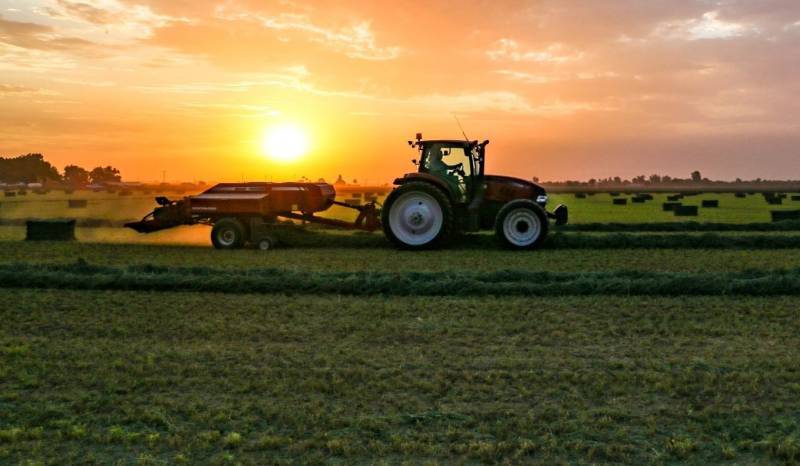
Punjab's pursuit of a Rs221 billion irrigation project in the Cholistan Desert, an extension of the Thar Desert and part of the former princely state of Bahawalpur has ignited significant concerns in Sindh, the lower riparian province. The project's lack of a publicly available environmental assessment or plans to safeguard the region's ecosystem and rich cultural heritage reflects a troubling continuation of colonial-era policies that prioritise agricultural expansion at the expense of environmental balance and community welfare.
The Central Development Working Party (CDWP) recently approved this massive irrigation initiative, which aims to transform barren lands into fertile farmland through the construction of the Cholistan Canal, a 176 kilometre-long waterway, and the Marot Canal, spanning 120 km. However, the project has sparked controversy, raising questions about accountability, fairness, and sustainability in large-scale development, especially concerning downstream impacts.
Inter-provincial water tensions
The canal project intensifies long-standing tensions between Punjab and Sindh over water allocation. Officials from Sindh have expressed serious concerns about diverting additional water to Punjab may exacerbate already strained downstream flows, particularly at the Kotri Barrage. This could threaten Sindh’s agricultural viability, drinking water supplies, and overall health of its ecosystem. Sindh's Irrigation Minister reported a concerning decline in average water flow at Kotri, which had plummeted from 17.29 million acre-feet (MAF) between 1976 and 1998 to just 6.921 MAF in recent years. These figures raise critical questions about whether further water diversions might violate the spirit of inter-provincial agreements established to ensure fair sharing of water resources.
While Punjab maintains that its diversion claims are valid under the 1991 Water Apportionment Act, which allocates floodwater shares, Sindh has called for intervention from the Council of Common Interests (CCI) to ensure equitable and transparent resource distribution. The stakes are high, and the potential for conflict over water resources remains a pressing issue.
A fragile ecosystem at risk
Cholistan is a delicate desert environment that serves as a sanctuary for endangered species, including the Chinkara gazelle, desert foxes, and migratory birds like the Houbara bustard. Environmentalists warn that converting this fragile ecosystem into agricultural land poses a serious threat to its ecological balance, which relies on scarce seasonal water sources and specialised native flora. Uncontrolled irrigation could lead to soil salinisation and the loss of natural vegetation, while the canal infrastructure risks disrupting vital wildlife corridors.
The absence of a public Environmental Impact Assessment (EIA) only heightens these concerns, underscoring the necessity for a comprehensive evaluation of potential habitat loss and ecological disruption before proceeding with the project.
To strike a balance between development and preservation, a robust Environmental Impact Assessment (EIA) is crucial and should be made publicly accessible. Additionally, conducting a detailed archaeological survey could help identify critical heritage sites, ensuring they are protected during construction
Cholistan is also rich in cultural and historical significance, with sites linked to the ancient Indus Valley Civilisation. Without adequate planning and impact assessments, the irrigation project could inadvertently threaten archaeological sites that provide invaluable insights into early civilisation and trade. Moreover, the current inhabitants of Cholistan, many of whom rely on traditional herding and crafts, may face disruptions as agricultural land expands. Encroachment on grazing areas jeopardises the resilience of these communities, whose way of life is deeply intertwined with the desert landscape.
Echoes of colonisation
From the outset, the Cholistan irrigation project reflects a colonial mindset where development is often prioritised over ecological and cultural preservation. The drive to transform arid lands into agricultural areas echoes past colonisation efforts that altered local ecosystems and marginalised indigenous communities in favour of agricultural expansion. Critics argue that this initiative could exacerbate existing inequalities, particularly regarding water distribution between Punjab and Sindh—a legacy of historical grievances.
In ignoring the fragile balance of Cholistan’s ecosystem, which is home to endangered species and ancient archaeological sites, the project risks erasing both natural and cultural heritage. The local population, whose traditional livelihoods are interwoven with the desert’s rhythm, faces further marginalisation as agricultural land encroaches on their territories.
A call for sustainable development
To strike a balance between development and preservation, a robust Environmental Impact Assessment (EIA) is crucial and should be made publicly accessible. Additionally, conducting a detailed archaeological survey could help identify critical heritage sites, ensuring they are protected during construction. Wildlife conservation initiatives, such as creating corridors along canal routes and regulating water flows, could maintain ecological integrity, while soil and crop management strategies—such as favouring drip irrigation over flooding—could mitigate the risk of salinisation.
Local communities must have a voice in the planning process, with opportunities to support traditional livelihoods and preserve cultural heritage. Maintaining grazing zones can reduce the pressure on herding communities, while initiatives aimed at sustaining craft traditions could help bolster the region's cultural economy.
Ultimately, the Cholistan irrigation project stands at a crossroads between economic ambition and ecological responsibility. Addressing the downstream needs of Sindh alongside the preservation of Cholistan’s environmental and cultural legacy would demonstrate a commitment to sustainable development and regional cooperation. With transparency, inter-provincial dialogue, and robust safeguards, this project could advance agricultural goals without compromising the unique ecological and cultural heritage of the Cholistan Desert.

